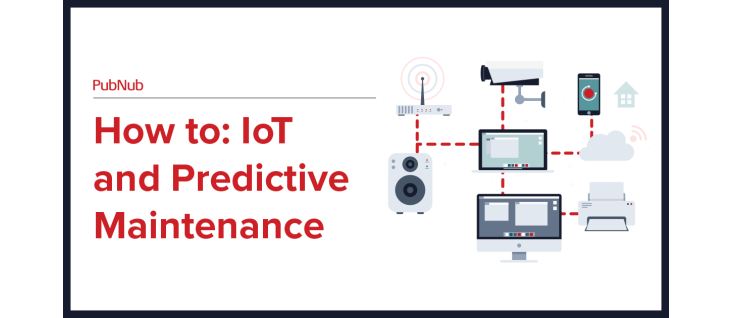How to Implement IoT Predictive Maintenance

Worldwide, the number of IoT devices is predicted to triple from 9.7 billion in 2020 to more than 29 billion in 2030. All these devices are connecting the world like never before. Industrial IoT presents new opportunities in the manufacturing and maintenance sector. Data from IoT sensors can be used to reduce maintenance, downtime, and consumed resources. You can increase productivity by predicting when maintenance is required instead of blindly relying on schedules or when an asset fails. This maintenance strategy is called predictive maintenance (preventative maintenance).
Why are IoT and Predictive Maintenance a Big Deal?
Predictive maintenance is one of the many applications of the Industrial Internet of Things. If you can predict when an asset needs service, you can exploit the opportunity to make future investments and explore new revenue streams. You can avoid expensive equipment failures or breakdowns. Most importantly, you can lower maintenance costs with predictive maintenance technology. This cost-effective approach makes it easier to create a predictive maintenance program.
In contrast, reactive maintenance is when a piece of equipment fails or reaches the absolute end of the equipment's lifespan or lifecycle before receiving maintenance. This maintenance strategy results in less predictable machine downtime and unstable operational costs.
According to Bosch Software Innovation, "predictive maintenance allows enterprises to innovate through new revenue streams including enhanced warranty and maintenance services and also strengthen their competitive advantage through a differentiated offering. [...] Predictive maintenance will help manufacturers to increase customer satisfaction from fewer warranty claims."
What are the benefits of predictive maintenance?
Consider this timeline comparing traditional and predictive maintenance:
Pay attention to the frequency of maintenance for both. Traditional maintenance management results in more unplanned downtime from both failures and preemptive maintenance. Every gray and red mark indicates productivity lost from maintenance work. This corrective maintenance plan will make it challenging to create a maintenance schedule, and it means asset health is less clear.
A predictive maintenance strategy is more effective at increasing productivity due to more uptime. This results in cost savings and better asset performance. You only need maintenance when real-time data tells you the potential for failure is detected based on condition monitoring equipment. This condition-based maintenance plan allows you to create a maintenance schedule that includes proactive maintenance based on previous maintenance activities and operating conditions.
Advancements in artificial intelligence and optimized algorithms also allow more opportunities to monitor equipment conditions on critical assets. AI could potentially catch failure modes and initiate maintenance tasks even earlier.
How is PubNub used with Industrial IoT?
Suppose you plan to implement predictive maintenance software or build IoT sensors to collect data for predictive maintenance tools. In that case, you must depend on your chosen solution to power it. If the service powering your IoT sensors goes down, your machines may fail, and you'll lose productivity. To effectively reduce costs, you must use a reliable way to transmit sensor data.
PubNub's primary product is a real-time publish/subscribe messaging API built on a global Data Stream Network. Messages sent with PubNub are delivered in under 0.25 seconds and usually much faster (30--40ms). PubNub supports dozen of SDKs and has features like push notificationsfor real-time updates. PubNub provides a 99.999% SLA on all of its services, making it an excellent choice for transmitting IoT data.
PubNub offers a serverless environment to execute functions on messages as they route through the PubNub Network. You can incorporate logic like re-routing, augmenting, filtering, transforming, and aggregating data.
Serverless IoT with PubNub Functions
Pubnub Functions makes it easy to create microservices for enhancing your Internet of Things deployments. You can route, filter, transform, augment, and aggregate real-time messages. You can also enrich messages with HTTP calls to 3rd party APIs and services.
PubNub IoT Resources
Have suggestions or questions about the content of this how-to? Reach out to devrel@pubnub.com.